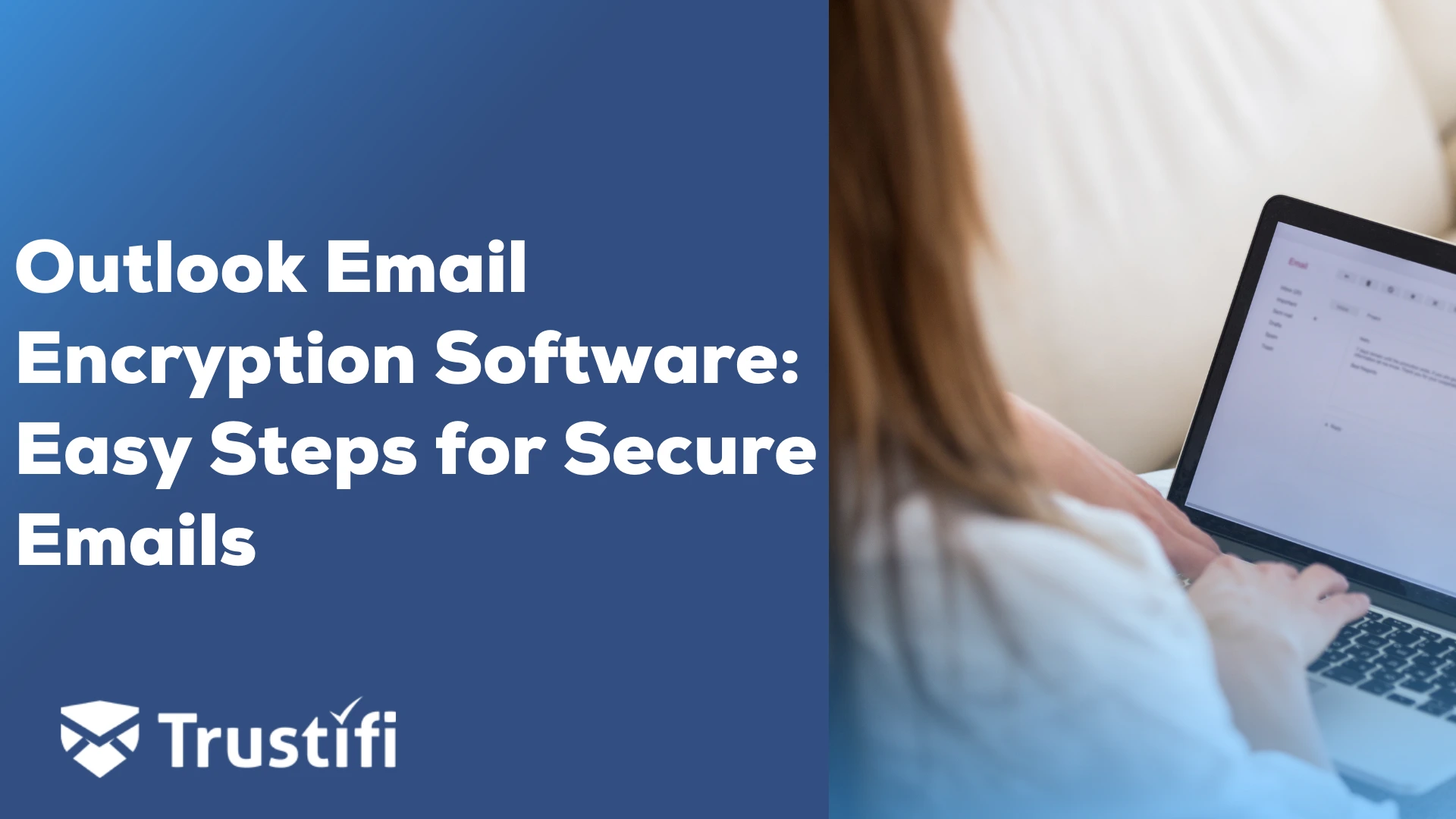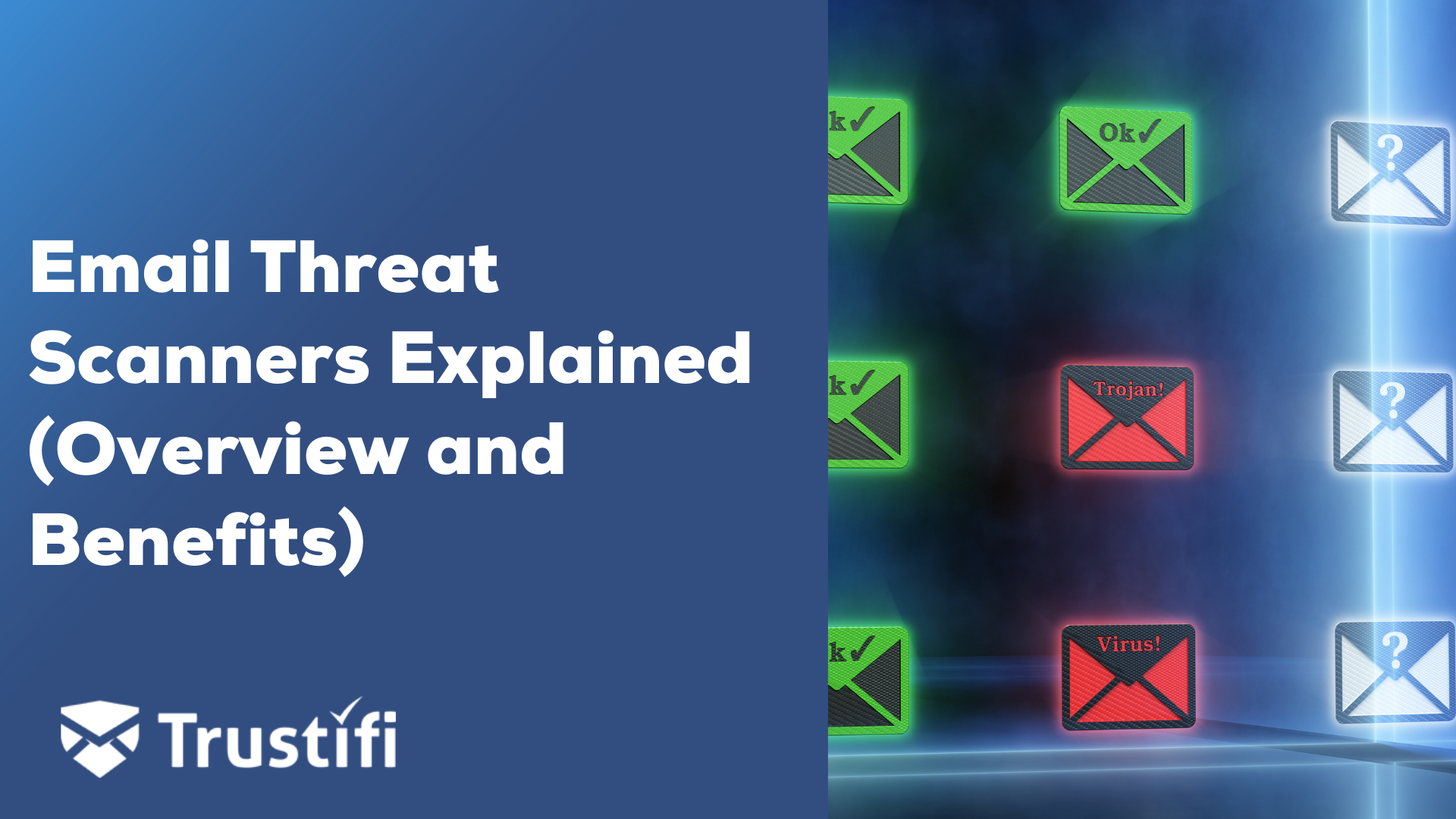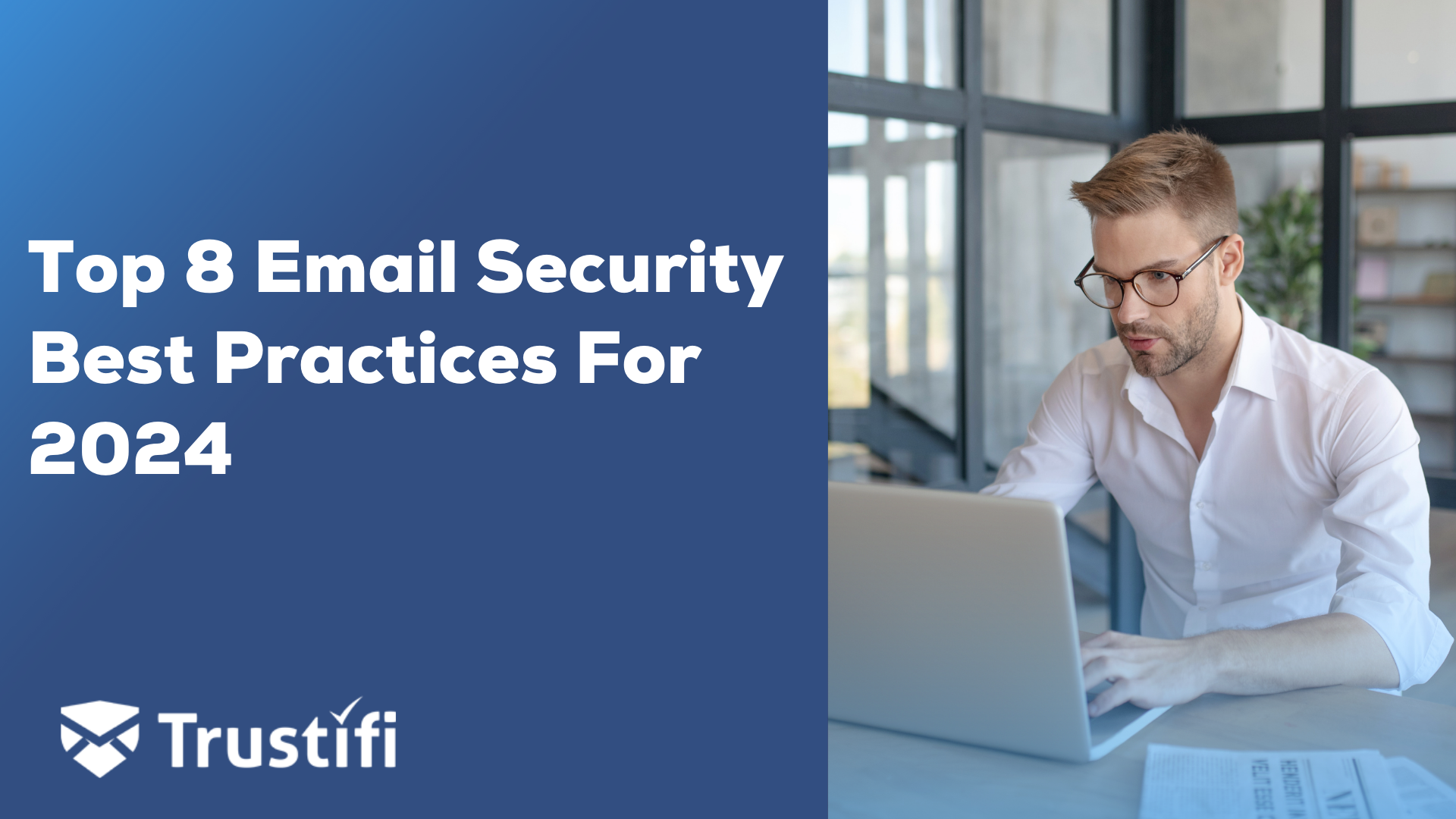Each day, users choose whether to enable encryption in email communications, or not. That decision creates risk and compliance challenges, especially for organizations in regulated industries. With updated encryption tools, encrypting email within Microsoft Outlook has become less complicated for users.

Even with the advancements in email encryption simplification, organizations should evaluate the various vendors offering this capability, including Trustifi’s robust email encryption.
Trustifi, a global email security provider, offers a powerful tool and fully integrated email encryption services embedded within its outbound security layer, which includes data loss prevention(DLP) and data tokenization.
Why Is Outlook Email Encryption Essential for Every Organization?
Email encryption protects the content within each email message. Cybercriminals, hackers, and scammers continuously look for ways to read their victim’s messages. Organizations must protect their data to meet compliance regulations by enabling additional email encryption to ensure their messages stay secure without relying on TLS only.

TLS doesn’t protect email after the message is delivered. Hackers have cracked early versions of TLS, requiring organizations to continue updating their versions.
How Email Encryption Works with Outlook?
Encrypting a message is very easy with an Outlook account. Here are basic steps for every user to follow:
Create a new message within Outlook.

Click on the Encrypt Button.

Select encrypt from the list of options.

What are the Various Email Encryption Methods in Outlook?
Several Outlook encryption options are available: S/Mime Encryption, Microsoft Purview Message Encryption, Individual Rights Management(IRM), and PGP.
S/Mime.
“The S/MIME protocol sends digitally signed and encrypted messages.” S/MIME offers services for email messages, including:
- Encryption capabilities ensure the security of email content.
- “Digital signatures support verifying the identity of the sender of an email message.”
Microsoft Purview Message Encryption.
Microsoft Purview Message Encryption is an online service on Azure Rights Management that secures emails with encryption, identity, and authorization policies, including options like templates and the “Do Not Forward” feature.
Individual Rights Management (IRM).
“IRM is an encryption solution that applies usage restrictions to email messages to prevent unauthorized individuals from printing, forwarding, or copying sensitive information. Microsoft 365’s IRM capabilities use Azure Rights Management (Azure RMS).”
PGP.
The OpenPGP proposed Standard, defined by the IETF’s OpenPGP Working Group in RFC 4880, provides all the information needed for developing applications using the OpenPGP format.
PGP, introduced in the 1990s, was the first free encryption software. It uses both asymmetric and symmetric cryptography, along with hashing and data compression, for strong encryption. Despite its name, it offers high security. However, it can be difficult for some users.
What Are the Challenges of Current Email Encryption Standards?
S/MIME encryption is an older encryption format with drawbacks and limitations.
To use S/MIME in Outlook, you need to install a particular certificate. Both sender and recipient must have S/MIME encryption set up. If the recipient doesn’t have it, they won’t be able to read your email. S/MIME is widely supported, making it difficult for many recipients. Once the message is sent, the recipient will need your encryption key to decode it.
S/MIME is insecure because of vulnerabilities like message takeovers and the risk of compromised encryption keys. Other encryption standards, such as PGP, have vulnerabilities and can be complex to set up. In contrast, they are not officially integrated with Outlook like S/MIME.
What Are Challenges Email Encryption Presents?
Email encryption, adequately deployed and enabled for the users, works effectively. Emails encrypted with AES-256 encryption stay protected.
However, email encryption has challenges with its administration and user consumption. Here are known difficulties with email encryption:
User Acceptance.

Users continue to the challenge for consumption of email encryption. Early portal-based email encryption solutions created several user challenges in encrypting their messages. Receivers of the email messages also found the portal-based solutions challenging. These challenges include:
Users Forgetting Their Passwords.

The email recipient does not receive or remember the passcode, pin, or other authentication tokens to decrypt the message.
Slow Message Delivery.

If a Secure Message doesn’t open promptly, it could be because of connection issues or other problems. Wait a few minutes to see if it loads or if there may be a delay because of message size or processing.
Message Not Displayed Properly.

The Secure Message may not appear readable when opening the attached encrypted file, possibly displaying random text or HTML markup.
Compatibility Issues.

Specific mail encryption methods necessitate mutual use of the same encryption technology by both the sender and receiver. This can present difficulties when different email systems or recipients possess outdated software without decryption support.
Human Error.

Client-side encryption requires users to encrypt their messages, which can lead to accidental exposure of sensitive information if they forget to encrypt.
Who Are The Top Email Encryption Solutions For Outlook?
Various apps and software tools are available to encrypt your email across different devices. Popular options include Trustifi, ProtonMail, CipherMail, Mailvelope, Virtru, and Lockmagic.
Trustifi
Trustifi is an Outlook email add-in that offers secure encryption, certified proof of delivery, tracking, and security protection for sending important documents. It is the top choice for secure email encryption. Trustifi’s platform ensures compliance for industries like healthcare by automatically encrypting emails and preventing the unauthorized transmission of sensitive data.
ConTrustifi currently does not support Gov-cloud or Microsoft 365 email for FedRamp cloud customers.
Virtru
Virtru protects organization email through its Outlook encryption plugin. It secures data with multiple layers of encryption, tracks who has accessed or forwarded emails, and controls access at any time.
ConVirtru’s installation and activation process is complex and can lead to confusion. Manual encryption activation for each email disrupts the composing process.
LockMagic
Lockmagic seamlessly integrates with the Microsoft Outlook email client, allowing users to encrypt email messages with a single click of the ‘Send Secure’ button directly from the Outlook application
ConThis solution does not have additional email security protection capabilities. Users wanting more layers of protection, including artificial intelligence, data loss prevention, and tokenization, will need to purchase an additional solution.
ProtonMail
Proton Mail Bridge is an open-source application that facilitates full integration of a Proton Mail with any program supporting IMAP and SMTP.
ConSome sites block Proton Mail because it is less popular than larger email providers. Some forums restrict registration to well-known providers such as Yahoo, Outlook, and Gmail to prevent spam.
CipherMail
“The CipherMail Email Encryption Gateway supports four encryption standards: S/MIME, PGP, PDF encrypted email, and TLS.” The gateway can detect recipient encryption standards and encrypt emails using multiple methods if necessary.
ConCiphermail offers no additional email security protection layers beyond email encryption.
Mailvelope
Mailvelope is a browser extension that enables users to send and receive encrypted emails with various webmail providers, including Outlook, Gmail, and Yahoo, offering flexibility and customization options.
ConMailvelope encrypts emails but does not protect message metadata from being seen by others.
Mimecast
Mimecast offers a cloud-based email service that integrates well with Office 365 security features. It provides comprehensive protection against advanced threats, data leaks, viruses, spam, and more.
ConMimecast continues to be challenging to configure for various email security protection strategies. Email phishing attacks continue to pass through their file.
Microsoft recently released an update for Outlook on Windows that introduces a new version of Outlook that is incompatible with Mimecast for Outlook. The new Outlook client does not support COM Add-Ins, including Mimecast for Outlook.
Proofpoint
Proofpoint provides email security tools for large businesses. It offers email encryption for Outlook, archiving, and spam filtering options in the cloud or on-premises.
ConProofpoint still serves large enterprises but requires extensive setup and maintenance. Integrating with other solutions can be difficult, and customization can be complex and tricky.
How Does Email Encryption Help with Compliance Regulations?
Many companies choose TLS for email encryption due to its widespread support and ease of use. However, emails in TLS format can be seen as plain text when not actively sent, which might not meet compliance standards. Some compliance regulations may mandate extra email encryption beyond TLS.
PCI-DSS
Section 4.2.b of the PCI guidelines states that a policy should prohibit the transmission of unencrypted PANs through end-user messaging technologies.
HIPPA
Email encryption is recommended by HIPAA to protect ePHI from unauthorized access and maintain confidentiality.
General Data Protection Regulation (GDPR)
GDPR requires organizations to consider data protection when creating or updating products/services—article 5 lists principles to follow, including data encryption.
FAQ.
Question 1: Is TLS encryption enough?
Answer 1: Yes, if your organization has no compliance regulations or mandates. However, most organizations align with some privacy or compliance regulations, so enabling more robust encryption beyond TLS is essential.
Question 2: Does S/Mime encryption also help protect my organization from email spoofing and phishing attacks?
Answer 2: “S/MIME leverages digital signatures and public keys to ensure the email message maintains confidentiality, integrity, and authenticity.”
What Is the Future of Email Encryption For Outlook?
Given the technical expertise needed, implementing encryption may present challenges. Potential staff resistance to change or usability concerns regarding encryption systems could affect user adoption.
- Outlook is implementing enhanced email encryption technologies to safeguard against cyber threats.
- Outlook will soon have better anti-phishing features to protect your email.
- AI will improve Outlook email encryption with adaptive algorithms for better security against cyber threats.
- Outlook email encryption is getting customizable features for businesses to personalize security settings, making email security more flexible and scalable.
Why Trustifi?
Email encryption for Outlook is critical for organizations to protect their messages. Traditionally, email encryption could be more convenient and accessible for end users. Trustifi’s one-click-to-encrypt solution simplifies email encryption for organization users. The sender and receiver of the encrypted email benefit from Trustifi’s single-click solution. Ultimately, the easier the solution, the greater the adoption, the safer and more compliant organizations will become.
Trustifi’s email encryption comes deeply embedded with several additional email security layers; all managed from a single console. Clients seeking a solution integrating email encryption with data loss prevention (DLP) and data tokenization will find the Trustifi platform to meet and exceed their expectations.
If your organization is seeking an email encryption solution that is easy to use, cost-effective and requires minimal operational overhead to support email encryption for Outlook users, Trustifi email security powered by AI is the solution for you.
Contact our sales team today to schedule a demonstration!



